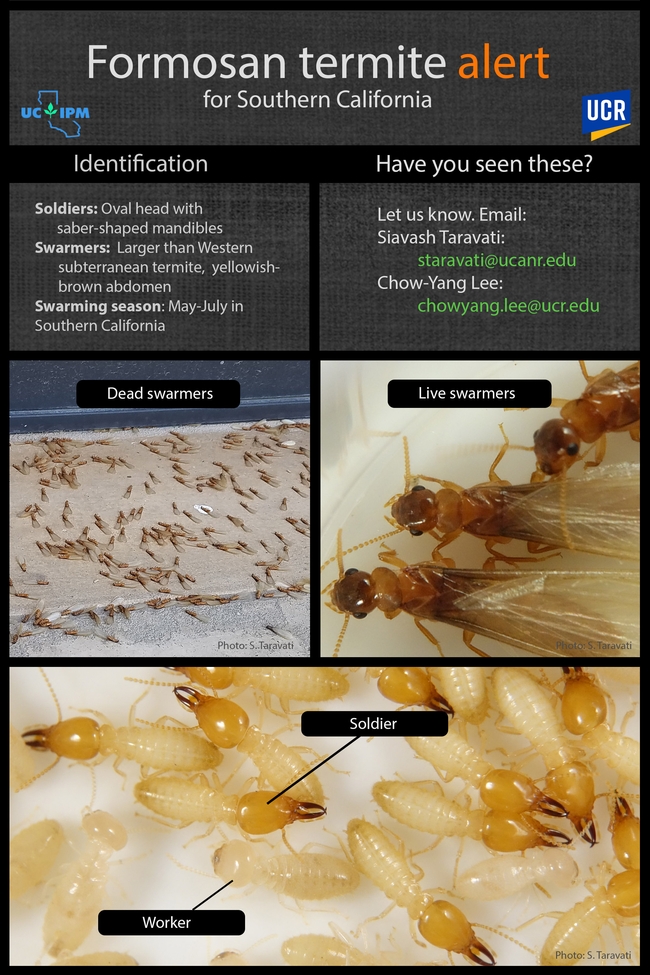The Formosan subterranean termite (FST), Coptotermes formosanus, is a very destructive pest first reported in California in 1992 in La Mesa, San Diego County. FST has since been found in Canyon Lake, Riverside County, Rancho Santa Fe (San Diego County) and Highland Park (Los Angeles County).
While this termite species is currently only found in a few locations in Southern California, it's important for residents and professional pest managers to be aware of them. Wood destroying pests can easily be moved through human activities.
To identify Formosan termites, UC IPM advisor Dr. Siavash Taravati and Dr. Chow-Yang Lee of UC Riverside developed this poster. Email them at starvati@ucanr.edu or chowyang.lee@ucr.edu if you see any termites resembling those in the poster.
For Pest Management Professionals: Is the management for Formosan termites the same as management for native subterranean termites?
The short answer is “it depends!”. Formosan subterranean termites (FST) can form extremely large colonies in the field reaching millions of individuals. When the active nests are primarily in the ground, most colony members stay in the ground except when foraging for food. In this case, in-ground baiting is used against native subterranean termites and it may provide adequate control. However, some FST colonies could be formed above the ground (aerial) with no or limited contact with the soil. In-ground baiting is unlikely to be effective for managing such aerial colonies.
If you are a structural PMP, read more in the Spring 2023 Green Bulletin Newsletter.
To learn more about subterranean termites and their management, see Pest Notes: Subterranean and Other Termites.
